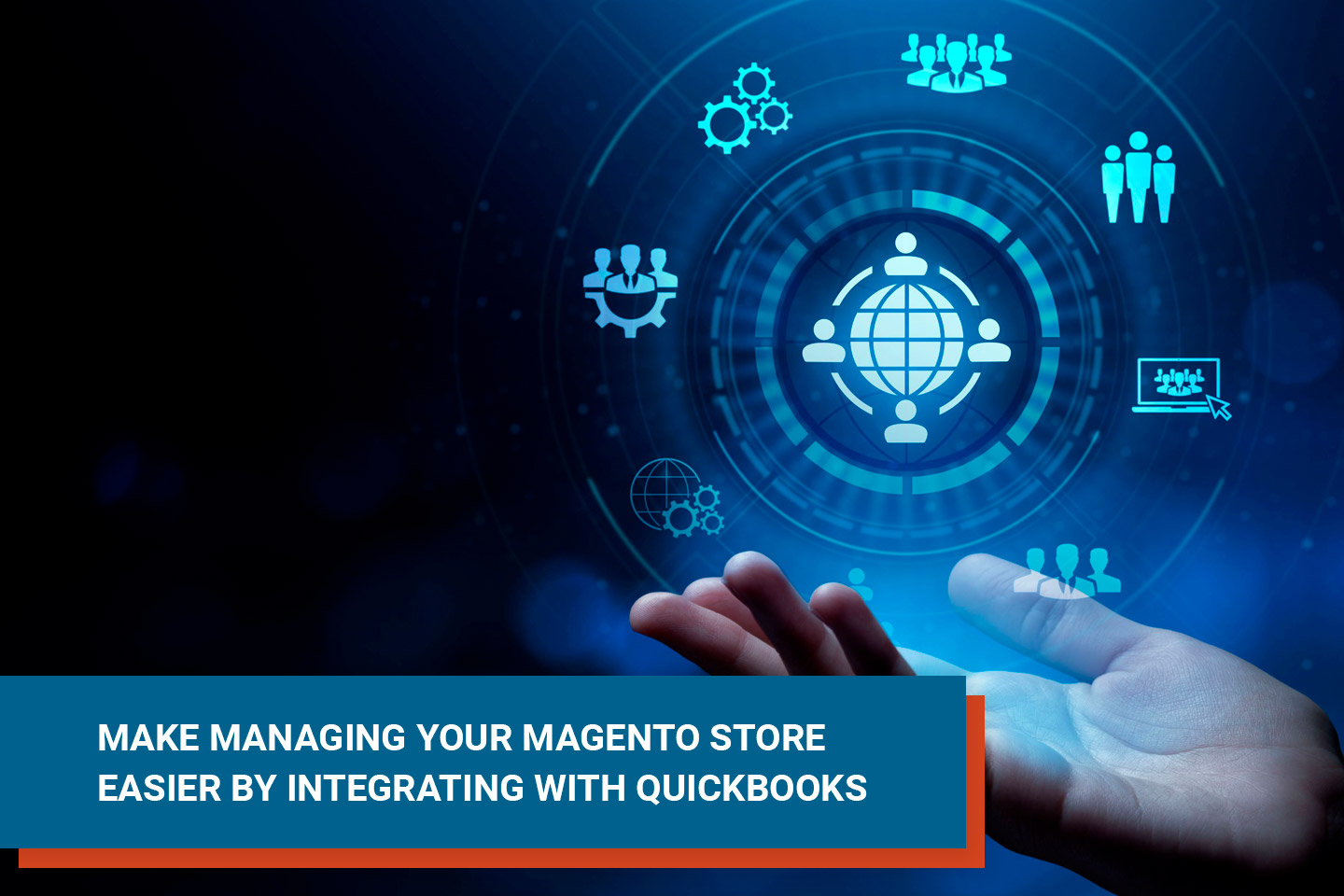5 Salesforce VoIP Integration Solutions for eCommerce in 2023
 Igor Krasnykh
·
7 minute read
Igor Krasnykh
·
7 minute read

Voice over Internet Protocol (VoIP) is increasing in popularity as more people stop using the landline. In particular, businesses can benefit from using VoIP services for call centers and/or connecting with remote workers.
VoIPs solve many of the communication challenges faced by businesses. Call centers encounter some of the most problematic customer dilemmas. Because all information needs to be taken into account to make improvements and resolve conflicts, having an integrated call tracker is a must.
A glance at how VoIP works
One crucial difference between traditional calls and VoIPs is cost. Traditional calls require infrastructure, such as wires and special equipment. In addition to setup costs, a person must pay ongoing service fees.
VoIP vendors, on the other hand, use existing networks for data trafficking — eliminating the need for individual internet connections.
With a VoIP, analog voice calls are converted into packets of data that travel over any Internet Protocol (IP) network. The Internet connection is already paid for by the user, so most VoIP calls are free of charge. When calls do have a charge, they are typically lower than the corresponding public switched telephone network (PTSN) rates.
With a VoIP service, you can call either a landline or mobile phone and establish a computer-to-computer connection.
Putting a VoIP to work for your business
By adding voice capabilities to a data network, you will be able to reduce costs, improve productivity and enhance cooperation in the following areas:
- Fees per user: In terms of VoIP, the number of lines you need open simultaneously is equal to the number of users. It has nothing to do with the number of phones in your office or the number of employees. With a VoIP, you can easily add, move or change phone extensions and locations, which saves money and gives you more flexibility.
- Fees and charges for specific features: Unlike traditional phone carriers, dozens of features are included with VoIP services. No phone contracts are required, either.
- Hardware: A VoIP enables your personnel to access your communication system and customer data on a wireless network, and business calls can be made on personal mobile devices via softphone apps. As a result, work can be done from home or on the go.
- Unified communications solution: With a unified communications solution, workers can easily connect through voice, video chat, Web conference and instant messaging. This takes your business capabilities beyond a basic VoIP.
- Maintenance and equipment: Hardware is all that is required to make VoIP calls, so there is no need to hire specialists to maintain the system.
Free vs. paid VoIP services

While there are many free VoIP services available, they are not ideal for businesses. Programs like Skype experience a higher outage rate than their paid counterparts.
Outages may not seem like a big deal when calling a friend, but they become more serious during urgent virtual work meetings. Companies that invest in high-end solutions think they will get better support and a more reliable phone system.
In short, free remote conferencing options are better suited for private use. Serious enterprises should use a paid service they can depend on.
VoIP Testing: Play it safe
Any business-grade VoIP service must be of the best quality. Otherwise, business communication will be compromised.
There are some parameters on which the quality of the VoIP services are assessed. VoIP Test performs true socket-based and HTTP tests from your browser to determine latency down to the millisecond. Through VoIP testing, you get to know if the VoIP service is up to par.
The parameters on which VoIP tests rest are:
- The compatibility of the VoIP protocols;
- Delay, packet loss, noise, jitters;
- Smooth call quality with non-VoIP connections;
- Capacity to support a large number of users or the ability to bear the load of VoIP traffic;
- Privacy and security (to maintain the privacy of the call line).
Some VoIP Service Providers – including Nextiva, 8×8, OnSIP and INAANI – offer VoIP testing along with their services so you can experience the quality first-hand before you subscribe. You can also use additional VoIP monitoring tools to help measure the speed and nature of your VoIP system without technical knowledge being required.
Why choose Salesforce?
Even with a VoIP, companies can still encounter issues. One of the main problems they face is that some VoIP solutions do not integrate well will customer relationship management (CRM) systems. With more than 150,000 users, Salesforce is quickly becoming the industry standard for CRMs worldwide.
Switching between Salesforce and VoIP programs takes additional time, which can add up to a considerable amount of lost productivity over a day, week, month and year. That’s why it is important for all company systems to be well-integrated.
Salesforce has a ready-made VoIP solution for eCommerce businesses that covers more than 80% of business needs. Salesforce solutions automate all the processes via integration (e.g. Powersync’s) and artificial intelligence, so all data is easily accessible and can be conveniently sent from one system to another. In addition to helping with customer acquisition and satisfaction, they also help deepen customer relationships.
While Salesforce offers a fully integrated, cloud-based telephone solution for businesses, it is unable to track calls on its own. One of the main drawbacks of the Salesforce Service Cloud product (the main customer service app) is that all calls have to be logged manually, which creates a time gap between taking the call and assigning the follow-up tasks to agents.
Automating the process calls for an outside solution to fill in the gaps between Salesforce and your phone system, as well as the VoIP call capabilities – such as voice calls, video calls and chats. All of these can be integrated with Salesforce using the Salesforce CTI’s interface.
Advantages of VoIP Integration with Salesforce CRM Platform
Here are five of the biggest advantages to Salesforce VoIP integration.
Increased Efficiency
By integrating your phone system with Salesforce, many tasks — like calling customers and tracking data — can be fully automated.
Higher Sales Volume
By increasing overall efficiency, you’ll have the bandwidth to reach more customers.
Improved Customer Service
A VoIP Salesforce integration provides customer service reps with a snapshot of customer data as they take calls. Being equipped with this information empowers them to provide a more personalized customer experience.
Data Accuracy and Integrity
By integrating data between systems, the possibility for human error is eliminated.
More Happy and Productive Employees
With this technology, sales reps are freed up from doing menial tasks like manual data entry. This allows them to focus on doing what they’re good at — winning new customers.
Top 5 Salesforce VoIP Integration Solutions That Work Best
If you’re reading this article, it’s likely you’re on the hunt for a VoIP that integrates with Salesforce. CTI (computer telephony integration) has transformed communications by linking individual tools into one platform. As mentioned above, not all VoIP solutions integrate smoothly with Salesforce. Luckily, there are VoIP integrations for Salesforce that have been warmly received by users. Here are five of the best Salesforce VoIP integration solutions.
RingCentral

RingCentral is the leader in the use of CTI’s for Salesforce. Its solutions allow today’s mobile and distributed personnel to connect via voice, video calls, team messaging, SMS and conferencing practically anywhere and on any device with a stable Internet connection. RingCentral was recognized as a leader in the 2018 Gartner Magic Quadrant for Unified Communications as a worldwide service. RingCentral provides an open platform that integrates with today’s leading business apps, is flexible and gives customers the ability to customize their workflows.
Jive Voice

Jive Voice is an all-inclusive cloud-powered business communication solution that also offers advanced private branch exchange (PBX) features, including Hosted PBX, call reporting and analytics, intercom, virtual fax, call waiting, call forwarding and many other features. The software provides a drag-and-drop interface, and changes can be made online in real-time. Additionally, administrators can easily manage groups and create users.
Nextiva

Nextiva is an award-winning, cloud-based phone service provider. Combining it with the Salesforce CRM enhances the entire call processing experience. It provides market analysts with a powerful tool that combines incoming callers, log notes, review call histories, sales gamification, dashboards and more.
Talkdesk

Talkdesk is positioned as the world’s leading browser-based contact center. It allows companies to have a more personalized experience with customers and prospects, make data-driven decisions that improve key performance indicators (KPIs) and improve overall team efficiency and productivity. It offers hundreds of customizable features and seamless integration with Salesforce, Zendesk, Slack and other leading apps.
Vonage Business

Vonage Business can be easily scaled according to business needs, with all changes applied via the online admin portal. The solution offers a cloud-hosted business VoIP phone system that comes with more than 40 calling features. More features can be added to the account for an additional fee, and new customers are offered an online orientation and admin training. To find out more about how to use Salesforce and how to integrate it with other product solutions, read our previous blog post.
Consider PowerSync Your Trusted Partner
When it comes to creating the perfect software mix for your business, you may not know where to start — and that’s okay! At PowerSync, assisting businesses in this area is our specialty. With so many options on the market today, integrating Salesforce and VoIP can be a real head-scratcher. However, intelligent telephony is becoming a central part of customer service strategies for many businesses.
If you use Salesforce, it’s important to find the best VoIP solution integration Salesforce is compatible with. Unfortunately, there are some shoddy and inefficient solutions out there that don’t live up to their promises. That makes it all-the-more important to pursue expert guidance in this area. PowerSync’s ecommerce experts can help you sift through the endless options. If you need advice on Salesforce CRM VoIP integration options, or if you just need basic guidance on your ecommerce tech options in general, we’re here for you. Contact us to schedule a risk-free call.
FAQ
What is a Salesforce API integration?
A Salesforce API integration is a tool that seamlessly integrates data across systems.
What’s a good Salesforce alternative?
There are many CRMs on the market today. While Salesforce is a leading name in CRM brands, there are other companies that offer robust CRM solutions as well. While Salesforce is a great option for many businesses, it may not be the best for everyone. Conducting thorough research and seeking expert guidance can help businesses make the right decision.
Does Salesforce have a VoIP?
Yes. It’s called Salesforce Service Cloud Voice , and many merchants leverage it as part of their omnichannel customer service strategy. While Salesforce and hosted VoIP go hand-in-hand, some merchants may use another VoIP provider for a variety of reasons (including cost). For some businesses, it is more efficient to use a Salesforce VoIP integration solution.
What phone systems integrate with Salesforce?
Finding the right VoIP phone with salesforce integration is important, and there are more solutions coming to the market every day. The best way to know if your phone system will integrate with Salesforce is by searching the Salesforce App Exchange.
What is CTI integration in Salesforce?
CTI stands for computer telephony integration, and it describes a technology that enables computers to talk to telephones. All of effective salesforce VoIP integration solutions mentioned above are considered CTI integrations because they enable the Salesforce CRM to communicate with phone systems.
What is CRM integration for VoIP?
CRM integration for VoIP simply means connecting your VoIP provider with your CRM platform. That could be Salesforce or a number of other softwares.



